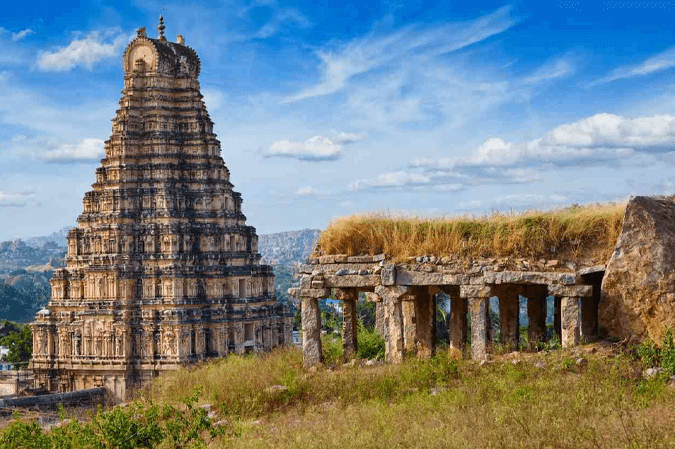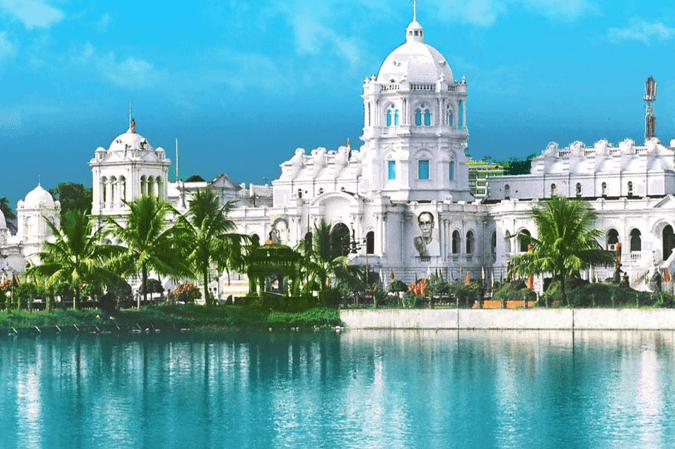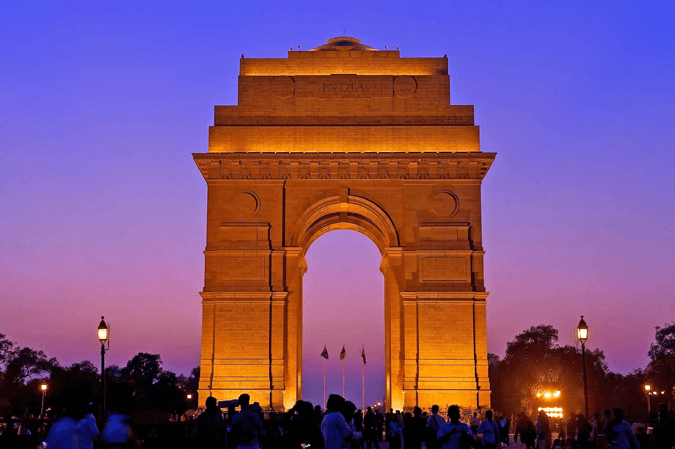History
Karnataka’s history is marked by a series of influential dynasties and empires:
- Ancient Period: The region was part of the Maurya Empire under Emperor Ashoka and later the Western Ganga Dynasty. The Chalukyas and the Rashtrakutas played significant roles in shaping the region’s history with their architectural and cultural contributions.
- Medieval Period: The Vijayanagara Empire, established in the 14th century, is one of the most prominent historical periods. It was known for its cultural renaissance and architectural marvels. The Wodeyars of Mysore also played a crucial role in the state’s history.
- Colonial Era: The state came under British rule in the 18th and 19th centuries, which led to significant administrative and social changes.
- Post-Independence: Karnataka was formed in 1956, following the reorganization of states based on linguistic lines, merging various regions into one state.
Landscape and Area
Karnataka spans an area of 191,791 square kilometers, making it the sixth-largest state in India. Its landscape includes:
- Western Ghats: Running parallel to the Arabian Sea, these mountains are a biodiversity hotspot and include several national parks and wildlife sanctuaries.
- Deccan Plateau: The majority of the state lies on this plateau, characterized by its semi-arid terrain and rich mineral resources.
- Rivers: Major rivers include the Krishna, Godavari, and Kaveri, which are crucial for agriculture and water supply.
Climatic Conditions
Karnataka experiences a diverse climate:
- Coastal Region: The western coast has a humid tropical climate with high rainfall during the monsoon season.
- Interior Region: The Deccan Plateau experiences a more arid climate with hot summers, mild winters, and moderate rainfall.
- Southern Hills: Areas like Kodagu (Coorg) experience a subtropical climate with significant rainfall and cooler temperatures.
Historical Places
Karnataka is renowned for its historical and architectural landmarks:
- Hampi: A UNESCO World Heritage Site known for the ruins of the Vijayanagara Empire, including the Virupaksha Temple and the Hampi Bazaar.
- Badami: Famous for its rock-cut temples and the architectural brilliance of the Chalukya dynasty.
- Bijapur: Known for the Gol Gumbaz, an architectural marvel with the world’s second-largest dome.
- Mysore: Renowned for the Mysore Palace, a splendid example of Indo-Saracenic architecture and the city’s rich royal heritage.
- Belur and Halebidu: Famous for their Hoysala architecture, including the Chennakeshava Temple in Belur and the Hoysaleswara Temple in Halebidu.
Festivals
Karnataka celebrates a variety of festivals reflecting its diverse culture:
- Dasara (Dussehra): The grand celebration in Mysore with a royal procession, cultural events, and traditional festivities.
- Pongal: A harvest festival celebrated in the coastal regions with traditional dishes and festivities.
- Ganesh Chaturthi: Celebrated with great fervor, particularly in Bangalore, with elaborate decorations and processions.
- Hampi Utsav: An annual festival in Hampi celebrating the cultural heritage of the Vijayanagara Empire with music, dance, and drama.
- Karaga: A unique festival celebrated in Bangalore, featuring a traditional procession with the Karaga (a decorated pot).
Environment and Biodiversity
Karnataka’s environment is characterized by its diverse ecosystems:
- National Parks and Wildlife Sanctuaries: The state is home to several important protected areas, including Bandipur National Park, Nagarhole National Park, and Kudremukh National Park, which are crucial for wildlife conservation and biodiversity.
- Western Ghats: These mountains are recognized as a UNESCO World Heritage Site for their rich flora and fauna, including endangered species such as the Nilgiri tahr and the lion-tailed macaque.
- Rivers and Forests: The rivers and extensive forests play a vital role in sustaining agriculture, providing water, and supporting diverse wildlife.
Society and Culture
Karnataka’s society is a blend of various ethnic groups and cultures:
- Languages: Kannada is the official language, while other languages, such as Tulu, Konkani, and Kodava, are also spoken.
- Cuisine: Karnataka cuisine is diverse, with distinct regional variations. Dishes like bisi bele bath, dosa, and idli are popular, along with sweets like Mysore pak.
- Arts and Crafts: The state is known for its rich tradition of classical dance forms, such as Yakshagana and Kuchipudi, and crafts, including Mysore silk sarees and Bidriware.
Interesting and Hidden Facts
- Largest Cave Temple Complex: Badami’s rock-cut temples are among the largest and oldest cave temples in India.
- Land of Spices: Karnataka is a major producer of spices, particularly in regions like Coorg.
- Home of the Largest Dome: The Gol Gumbaz in Bijapur has the world’s second-largest dome, a marvel of medieval architecture.
- Cultural Melting Pot: Karnataka’s cultural diversity is reflected in its numerous festivals, languages, and traditions, making it one of India’s most culturally rich states.
Sources
- Government of Karnataka official websites
- Encyclopaedia Britannica
- Karnataka Tourism Development Corporation
- UNESCO World Heritage Sites
- Environmental studies and conservation reports
- Cultural and historical studies on Karnataka
- Image Source: www.godigit.com



